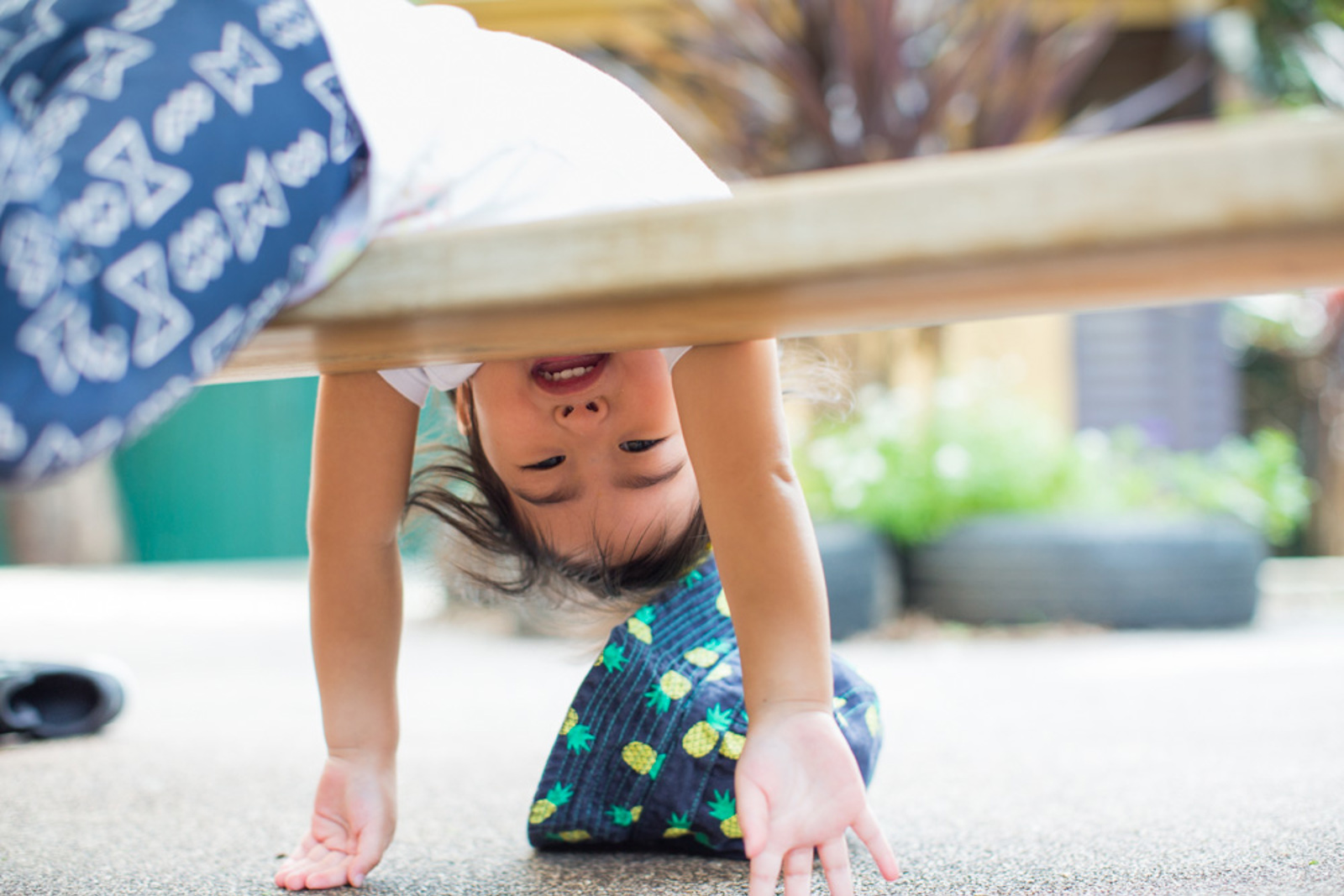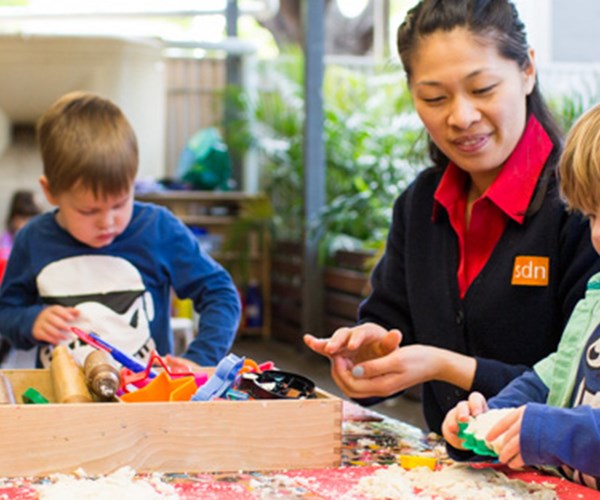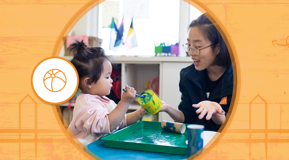Embracing risky play with courage and confidence

In our article on Outdoor Play in Winter, we provided some suggestions for parents and caregivers on how to encourage outdoor play in the colder weather. But what about once we get out there?
Embracing risk with courage and confidence
Risky play is beneficial for all children as it develops their ability to navigate the world they are growing up to live in. Children have an innate sense of adventure with plenty of courage and confidence. As parents and caregivers, however, we have an important role in managing this sense of adventure and reducing potential accidents and injuries.
There is much to gain for children learning to navigate their own risks, and as parents and caregivers, we can ensure children are developing this by embracing a risk-benefit approach.
So, what is a risk-benefit approach?
It is a comparison of the risks and benefits of children participating in an activity. Often there are times when the benefits to a child’s skills, sense of self or wellbeing outweigh the risk involved.
As a parent, it can be tempting to think that going outside can be too cold, or the equipment at the park is too high, or to jump in and whisk children away from a social situation with other children when out and about. But what other options are there? How can we challenge our own mindsets to ultimately benefit our childrens' learning?
What can parents and caregivers do to encourage a risk-benefit approach?
1. Be conscious of the messages we send children when we intervene
- “Be careful” – while well-intentioned a young child might not understand what it means. Coaching children through risk works well to build their self-esteem and awareness. Try asking them, "what do you think you need to do with your body to stay safe while you are climbing?” It’s also interesting to ask what children notice about their bodies when they engage in risk, what it feels like, and what those feelings might be telling them.
- Confident children are more likely to succeed in endeavours, so it's important to build confidence in children by giving them some positive feedback such as “that is great balancing!”
- Standing close to children or having hands out around them sends a message to a child that they are not capable. But they just might be. Instil confidence in your child by knowing when to step back.
- Removing children from risky situations and not giving them the opportunity to discover and test their ideas is also removing valuable learning. Think about how you can use risk as a learning opportunity.
2. You don’t need a playground or designed space to encourage risky play
Some communities have beautifully designed and purposeful risky play spaces such as Wildplay at Centennial Parklands and St Peter Fences Playground in St Peters to name a few, but there are other ways that parents can support risky play in everyday situations.
- Think about engaging children in home tasks with you such as cooking or using real tools.
- When out on walks allow children to balance on logs or garden borders, climb onto benches at the park or jump in those muddy puddles.
- If possible, take your child away from footpaths to help them learn how to navigate uneven surfaces as they walk or run.
- Challenge your ideas on children picking up sticks at the park. Instead of asking children to put them down, talk to them about how to play with them safely and see where their imagination takes them.
- Take adventure walks in your local community or in a suburb you have never been to before, so children start to develop an awareness of space and direction.









